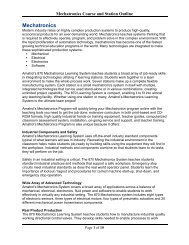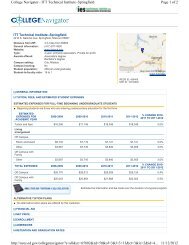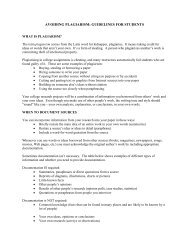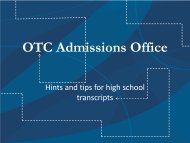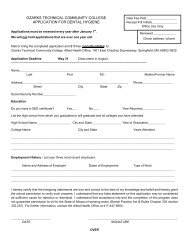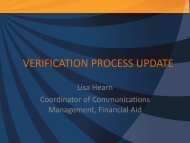Pearson Vue Testing Identification Requirements
Pearson Vue Testing Identification Requirements
Pearson Vue Testing Identification Requirements
- No tags were found...
You also want an ePaper? Increase the reach of your titles
YUMPU automatically turns print PDFs into web optimized ePapers that Google loves.
only if it contains both a photo and a signature and is not expired.Any credit card can be used as a secondary form of ID, as long as itcontains a signature and is not expired. This includes major creditcards, such as VISA, MasterCard, American Express and Discover. Italso includes department store and gasoline credit cards.)*These forms of identification cannot be used as primaryidentification for Regulatory and Certification candidates unlessspecifically indicated in the exam sponsor quick reference guide.Local Language <strong>Identification</strong>Primary ID (Local Language ID) – <strong>Identification</strong> in the local language (English or non-English) is anacceptable form of candidate identification for some exam sponsors for those candidates testing in thecountry where the identification was originally issued.Must be a non-expired, government issued ID with photo and signature.The candidate’s identification card may be in the local language only or it may be in both RomanCharacters and in the local language. A local language ID can only be used in the country where theidentification was originally issued and the exam is being administered.Examples of (but not limited to):Korea (Driver’s license/ Resident card/Citizen card)Hong Kong SAR IDChina (National ID, Military ID and Driver’s license)India (Driver’s license, Voter’s ID card, PAN)Malaysia Driver’s licenseRules for Accepting Local Language <strong>Identification</strong> (non-Roman, non-English)Candidate Name on identification is in the local languageIf the local language identification contains the candidate’s name in local language characters and the testadministrator can verify the name of the ID with the name on the schedule, the test administrator shouldaccept the identification and permit the candidate to sign his or her name in the local language. The testadministrator should then compare the candidate’s signature with the signature or characters presentedon the local identification.To accept a local language ID the following must apply:Local language ID should be valid, government-issued and contain the candidate’s photographand signature.If the local language ID has the candidate’s name and photo but does not contain a signature or thesignature is embedded, candidates must present signature identification from the list of acceptableprimary or secondary identification, unless otherwise noted by the exam sponsor.Local language identification must be presented and accepted only in the country where the local languageID was issued and the exam is being administered.Test administrators must have the ability to translate the candidate’s name in the local language into thecandidate’s name (Roman Characters) as presented in Registration Manager.If the test administrator cannot translate the local language ID from the local language to RomanCharacters the candidate must present a valid identification from the list of acceptable Primaryidentification which contains the candidate’s name in Roman Characters.Test administrators should request that the candidate to sign the signature pad using the same characters<strong>Pearson</strong> VUE Acceptable ID guidelines Version 2.8 7/3/2012





